Complete Solutions to Section II of chapter ICSE EXAMINATION PAPER, 2020 of Class 9 book with complete answers and questions
| Class 9 | BIOLOGY |
| Chapter | ICSE EXAMINATION PAPER, 2020 |
| OSWAL | Section II |
| Number Of Questions | 65 |
| Academic Year | 2023-24 |
The picture given below is a part of the alimentary canal.
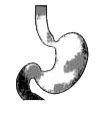
Identify the organ.
View SolutionThe picture given below is a part of the alimentary canal.
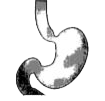
Name the digestive juice secreted by it.
View SolutionThe picture given below is a part of the alimentary canal.
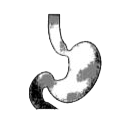
What is the significance of hydrochloric acid in the digestive juice?
View SolutionThe picture given below is a part of the alimentary canal.
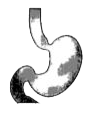
Mention the enzyme in the digestive juice. What is its action on food?
View SolutionThe picture given below is a part of the alimentary canal.
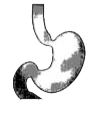
Draw a neat, labelled diagram of an intestinal villus.
View SolutionMention the exact location of the Pancreas
View SolutionMention the exact location of the Nectaries
View SolutionMention the exact location of the Sieve tubes
View SolutionMention the exact location of the Stomata
View SolutionMention the exact location of the Sternum
View SolutionThe diagram given below shows a few parts of a cell.
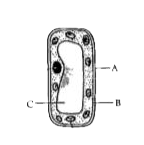
Is it a plant or animal cell? Give a reason to support your answer.
View SolutionThe diagram given below shows a few parts of a cell.

State the difference between the parts labelled A and B on the basis of permeability.
View SolutionThe diagram given below shows a few parts of a cell.

State the difference between the parts labelled A and B on the basis of permeability.
View SolutionName the cell organelles concerned with the following functions.
1. Production of energy
2. Protein synthesis
View SolutionState the functions of the following cell organelles
1. Golgi bodies
2. Endoplasmic reticulum
3. Nucleus
View SolutionDifferentiate between the following pairs on the basis of what is given in the brackets:
Glycolysis and Kreb.s cycle (Amount of energy released)
View SolutionMention one difference between each of the following pairs with reference to what is mentioned in the brackets:
Prokaryotic cell and Eukaryotic cell (Nucleus)
View SolutionMention one difference between each of the following pairs with reference to what is mentioned in the brackets:
Cellulose and Glycogen (Occurrence in organisms)
View SolutionMention one difference between each of the following pairs with reference to what is mentioned in the brackets:
Ascariasis and Taeniasis (Pathogen)
View SolutionDifferentiate between the following pairs on the basis of the aspect given in the brackets.
Respiration and photosynthesis (gas released).
View SolutionGiven below is an experimental setup to demonstrate a particular process in animals. Answer the questions that follow:
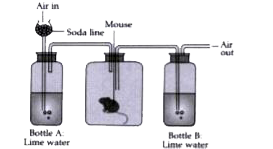
(i) Name the physiological process being studied.
(ii) Define the process mentioned in (i).
View SolutionGiven below is an experimental setup to demonstrate a particular process in animals. Answer the questions that follow:

(i) Name the physiological process being studied.
(ii) Define the process mentioned in (i).
View SolutionGiven below is an experimental setup to demonstrate a particular process in animals. Answer the questions that follow:

What is the function of soda lime?
View SolutionGiven below is an experimental setup to demonstrate a particular process in animals. Answer the questions that follow:

After a few hours what will happen to the lime water in Bottle A and in Bottle B? Give suitable reasons for your answer.
View SolutionGiven below is an experimental setup to demonstrate a particular process in animals. Answer the questions that follow :

Write a balanced chemical equation for the process carried out by the mouse.
View SolutionBiceps and (A) ...... are (B) ......... muscles causing opposing movements
View Solution(A) .............. is the largest digestive gland in the human body and secretes (B).....
View Solution(A) .......... is heating milk to a temperature of (B)............ `""^@C` and then chilling quickly
View SolutionGlucose is incompletely broken down to (A) ………. alcohol in plants during (B)........ respiration.
View SolutionScrubbers are devices to remove (A) ........ and (B) ........... air pollutants.
View SolutionThe diagram given below shows three bean seeds placed at different levels.
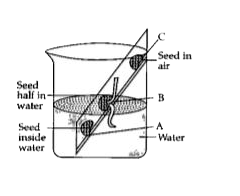
What changes will you observe in the seeds A, B and C after a few days? Explain with suitable reasons.
View SolutionThe diagram given below shows three bean seeds placed at different levels.

What changes will you observe in the seeds A, B and C after a few days? Explain with suitable reasons.
View SolutionThe diagram given below shows three bean seeds placed at different levels.

What changes will you observe in the seeds A, B and C after a few days? Explain with suitable reasons.
View SolutionThe diagram given below shows three bean seeds placed at different levels.

What changes will you observe in the seeds A, B and C after a few days? Explain with suitable reasons.
View SolutionThe diagram given below shows three bean seeds placed at different levels.

What changes will you observe in the seeds A, B and C after a few days? Explain with suitable reasons.
View SolutionGive biological explanations for the following statements:
A Bat is a Mammal.
View SolutionGive biological explanations for the following statements:
Leguminous plants increase soil fertility.
View SolutionGive biological explanations for the following statements:
Earthworms are very useful in agriculture.
View SolutionGive biological explanations for the following statements:
Roughage is an important part of our diet.
View SolutionGive biological explanations for the following statements:
Living rooms in our houses must receive direct sunlight for a few hours.
View SolutionThe diagram given below shows the supportive connective tissue.

Identify the tissues A and B.
View SolutionThe diagram given below shows the supportive connective tissue.

Where are the above tissues found in the human body?
View SolutionWhat is a joint? Give one example of an immovable joints.
View SolutionState the function of the Synovial fluid.
View SolutionThe diagram given below shows the supportive connective tissue.

Draw neat diagrams of the three types of blood cells.
View SolutionGive the biological terms for each of the following:
Category of organisms which can interbreed among themselves.
View SolutionGive the biological terms for each of the following:
Blind sacs in the lungs where exchange of respiratory gases takes place.
View SolutionGive the biological terms for each of the following:
The muscular structure that manipulates food in the mouth.
View SolutionGive the biological terms for each of the following:
The plastids which give red and orange colour to fruits and flowers.
View SolutionGive the biological terms for each of the following:
Resistance developed in the body due to a previous infection.
View SolutionGive the biological terms for each of the following:
Disease in which there is no germ and cannot spread from one person to another
View SolutionGive the biological terms for each of the following:
The principal heat regulating centre in the brain.
View SolutionGive the biological terms for each of the following:
The type of tissue that lines the respiratory tracts.
View SolutionGive the biological terms for each of the following:
The involuntary muscles found in heart.
View SolutionGive the biological terms for each of the following:
Introduction of weakened germs into the body to develop resistance against a disease.
View SolutionThe diagram given below represents a process occurring in a flower.
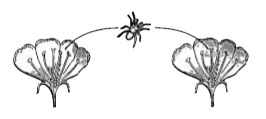
Name the process and explain it.
View SolutionThe diagram given below represents a process occurring in a flower.
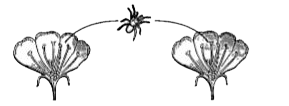
Mention the agent involved in the above process.
View SolutionThe diagram given below represents a process occurring in a flower.
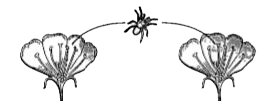
What is Double Fertilisation..
View SolutionThe diagram given below represents a process occurring in a flower.
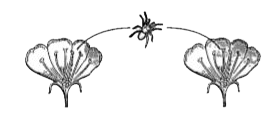
Define the term .Inflorescence..
View SolutionThe diagram given below represents a process occurring in a flower.

Draw a neat, labelled diagram of a carpel.
View SolutionList any two activities of WHO.
View SolutionWrite a balanced equation to represent anaerobic respiration in plants.
View SolutionMention two functions of the human skin
View SolutionName the two membranes covering the lungs.
View SolutionGive two examples of Amphibians.
View Solution
Section II questions and complete solutions for chapter ICSE EXAMINATION PAPER, 2020 of ICSE of Class 9